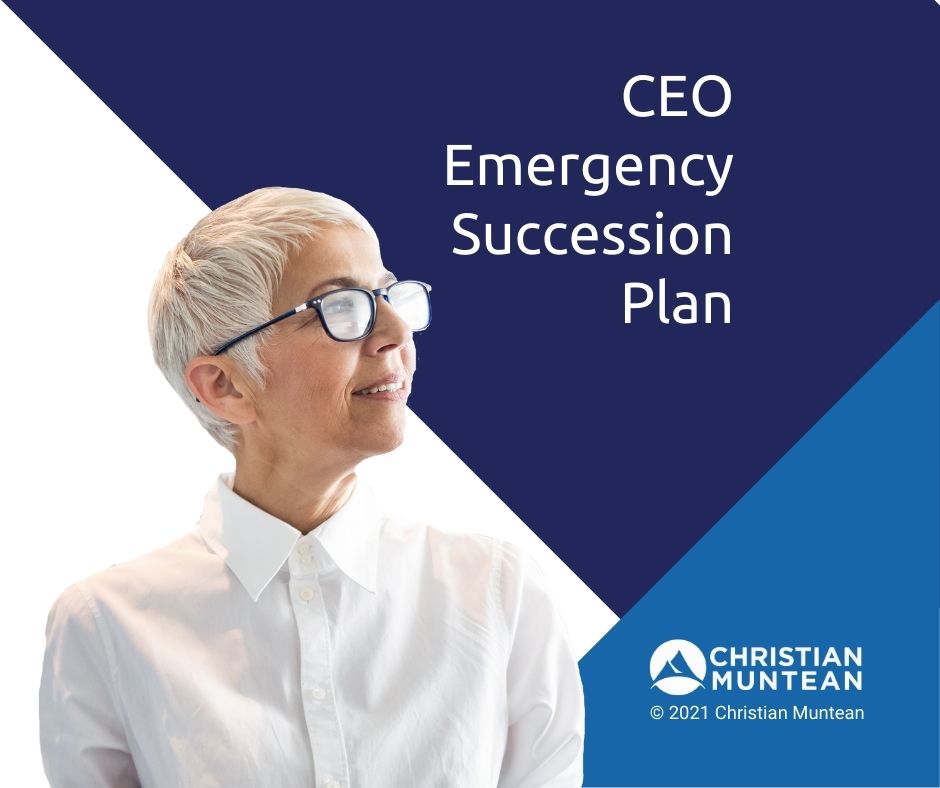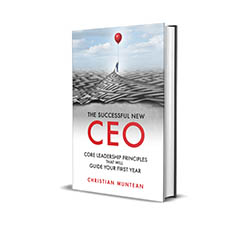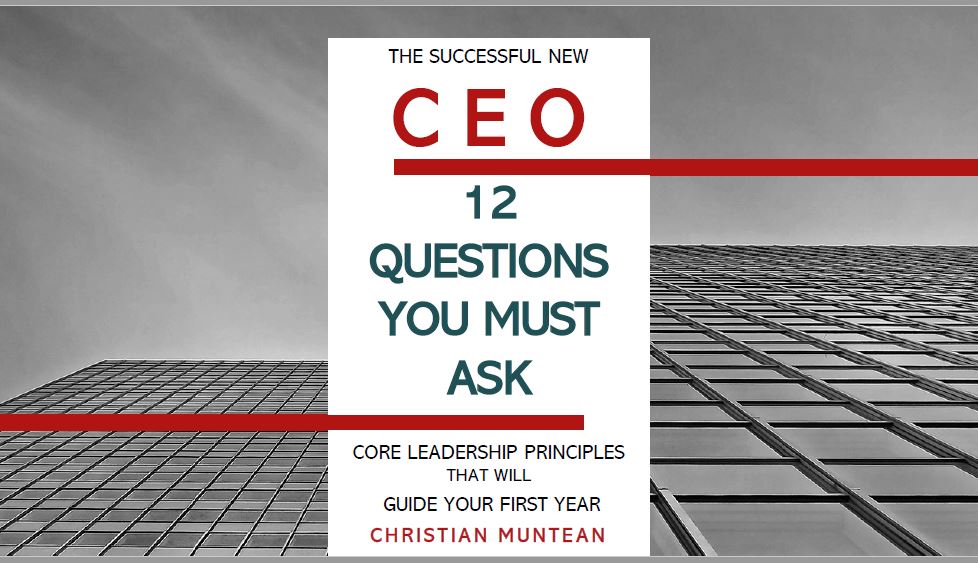How to Stabilize Your Company for Succession

 “How to stabilize your company for succession” is the next article in a short series on executive succession planning. We are following Western Manufacturing’s board and senior management team. They are developing a plan that will provide stability for future growth as well as preserve the legacy of their retiring founder. If you’d like to start the series from the beginning, click here.
“How to stabilize your company for succession” is the next article in a short series on executive succession planning. We are following Western Manufacturing’s board and senior management team. They are developing a plan that will provide stability for future growth as well as preserve the legacy of their retiring founder. If you’d like to start the series from the beginning, click here.
“Ok! Everyone come back and find your seats!”, said Adrian. He projected his voice as Western Manufacturing’s board and management team refueled on coffee and carbs.
Everyone was talking. Smiling. Joking. It was challenging to get their attention. This was a good sign. They were reaching the end of the day full of intense conversation and decision-making on topics they hadn’t anticipated talking about.
Truth be told, they didn’t know what to expect when attempting to plan for William’s retirement. William had founded and grown Western into a nationally respected company with a dominant regional presence. He led it well for decades. A few years ago, he had converted Western into an employee-owned company. Now, many of the senior management also served on the board.
The best guess for most was that succession planning was, perhaps, a slightly more elaborate recruitment process. And that felt weird.
At the beginning of the process, Tim, VP of Business Development, who wasn’t known for politically correct humor commented, “It feels like looking through a dating app while at your wife’s funeral.” The laughter was awkward. But everyone understood the sentiment.
Fact is, William was in fine health. He was retiring and announced that he would be done at the end of the year. As a part of the process, he asked Carla the Vice-Chair of the Board and COO, to head up the succession planning process.
Carla quickly realized she didn’t know where to start. She followed the advice of Ernie, the Treasurer and CFO, and hired Adrian. Adrian was a consultant who specialized in leadership succession.
Adrian had started the succession discussion in an unexpected place. He didn’t discuss William’s replacement at all. Instead, he led them to explore what kind of company they hoped Western Manufacturing would be or become in the years ahead.
Recap
“You’ve done great work today. You clarified your values and vision. This helps you know the kind of culture and company you hope to keep and build. That’s important so you can start to get a sense of the kind of leadership that you want and need,” Adrian said.
“You also took some time to identify what that kind of company might look like, operationally, five years from now. That helped you understand some of the basic skills and capacities a new CEO would need.”
“We have a final topic to tackle today,” Adrian continued. “Stabilization. Leadership successions are intrinsically major changes. Change tends to create uncertainty. Some of this is mitigated with the work that we just did. It’s easier to feel better about the future when the future looks appealing.”
Stabilization
“But along with a clearer sense of the future, it helps to create stability within the organization. Of course, we aren’t trying to stop all activity. But we just want to create circumstances where it’s as easy as possible, for everyone involved, for a new leader to come on board.”
“We’re pretty stable right now,” Carla piped up. “There aren’t any major issues going on.”
“That’s great!” Adrian replied. “However, let me go over some of what I have in mind. You may realize there are a few areas that may be worth taking a look at.”
Adrian turned to the dry erase board and wrote the following:
Stabilization
- Emergency succession planning
- Resolve any conflicts
- Address personality dependent roles and responsibilities
- Transfer/capture institutional knowledge
- Complete legacy projects (or bring them to a natural transition point)
Adrian continued, “This isn’t necessarily a complete list. But it is some of the most common areas where work needs to be done. Also, we won’t complete it today.”
“Today, we’ll identify the work that does need to be done, create a workgroup or groups to do that work, and develop deadlines to keep us moving forward. How does that sound?”
Ernie put his hand up, “It would help me if you explained each of those points.”
“Good idea, let me do a quick overview. I can provide greater detail to the working groups later,” said Adrian.
Emergency Succession Planning
“Do you have emergency succession plans in place?” Adrian asked the group. Most looked at him blankly. A few slowly shook their heads.
Carla spoke up, “We do, we developed one five years ago when William converted the company into an ESOP[1]. Our insurer and bank wanted us to have one.”
“Has it been updated since then?”
“Probably not….No.” said Carla.
“It seems that most of the board and management team aren’t familiar with it. That indicates to me that it might need a quick refresh. Additionally, what it takes to satisfy an insurance company or bank and a plan that is actually helpful in an emergency isn’t always the same thing. I’ll give you an emergency succession planning template you can follow. I’d encourage you to review and update your plan using the template as a guide. Additionally, if you haven’t already, I’d expand it to include the board and key staff.”
“Here’s why: Even though we are only discussing William’s retirement, leadership succession tends to trigger staff and board changes. The most obvious is that if William is replaced internally, that will leave an empty position that will need to be replaced. Even if William isn’t replaced internally, and someone is hired from outside, it isn’t uncommon for staff changes to accompany succession. For example, those close to retirement often start to decide that this is a good time for them to retire as well.”
They hadn’t openly considered this before. But most of the management and team were in their mid to late 50s. Some had been with Western for decades. As Adrian spoke, Carla was surprised to see a few heads nod around the room. Maybe more people were thinking about their own retirements than she thought.
Since Carla had been involved in developing the last emergency succession plan, she agreed to spearhead this conversation.
Resolve Any Conflicts
“Next,” Adrian said, “You want to address any chronic or significant conflicts within the organization. This includes internal ones as well as external ones. For example, any lawsuits or disputes with customers or partners.”
Ernie said, “I think we are pretty lucky in this department. We all get along well. I don’t think we have any conflict.”
Jamie, VP of Product Development spoke up, “Actually, we have a couple of lawsuits related to our intellectual property. We’re letting the lawyers do their thing. But I could probably light a fire under them and see if we could speed this up.”
Stephanie, the HR Director, said, “There’s a significant HR complaint that I can’t discuss here as well. We’re working on it – but it would be good to have that resolved one way or another. Jamie and I can run lead on this for the group.” Jamie nodded in agreement.
Carla was surprised. She knew about the lawsuits and the general details of the HR issue. But for some reason, they felt like background noise. As she thought about it, she realized that both were issues that William would tend to be either more directly involved with or consulted on.
She glanced at Ernie, the look on his face indicated that he might have been having similar thoughts.
Address Personality Dependent Roles and Responsibilities
Adrian continued, “The next point is a common one in small and mid-sized companies. Especially ones that have long tenure and are being led by the founder.”
“They tend to have more informal cultures and loosely defined roles and responsibilities. It is often worth taking a look at the future organizational chart that we created earlier and start thinking about formalizing roles and responsibilities.”
Stephanie spoke up, “I can take this one too. I’ve been trying to work on this for a few years. To be honest, I think some of the low-level conflicts and inefficiencies that occur are tied to being so informal. This will be a good time to tighten some of this up.”
Transfer or Capture Institutional Knowledge
“The next step is to capture any specific knowledge that William has locked up in his head. Key staff can be included as well. If the emergency succession plan is updated, this should capture all the key relationships, especially those external to the company,” said Adrian.
“But it’s also worth exploring with William what kinds of questions he is most frequently asked to deal with. In many cases, you’ll discover that a policy or procedure could be written around that question. This would capture the information and help create consistency during succession.”
Ernie put his hand up, “I can take this. We have a few financial management procedures that are a little loose. Mostly because we trusted William and it felt strange to ask him to report on things. But for a new CEO, it would be good to have a formal process.
I’ll take care of exploring other topics as well.”
Complete Legacy Projects (or bring them to a natural transition point)
“Last,” said Adrian, “It helps to tie up any loose ends or projects that William may have started. Or at least bring them up to a natural transition point.”
“I don’t think he has any,” Carla said. “Most of this was transferred to the board or management team five years ago. But I’ll check.”
Summary
“Great!” Adrian said. “Here is where the real work starts. Carla, would you be comfortable overseeing everyone who volunteered to follow up on projects?”
“I can do that,” Carla agreed.
“And can we agree to a follow-up meeting next month? At that point:
- The emergency succession plan should be updated,
- We can be updated on the lawsuit and HR issues. Ideally, solid progress to resolve both will be in action,
- Any personality dependent roles will be identified with a simple plan for formalizing them,
- Critical institutional knowledge that William carries will be identified. If it can’t all be recorded within the month, a timeline will be in place for doing so,
- Last, Carla will touch base with William to verify that there aren’t any legacy projects. But if there are, to draft a plan for those.”
“How does that sound?” Adrian asked. The group agreed. The high spirits from earlier were tempered a bit by the realization that some real work was required. But it was “do-able” work. And they could see how much of it would benefit the company – even if they weren’t thinking of succession planning.
More importantly, there was a sense of, “We can do this.” Which was a complete turnaround from just a day earlier when the general feeling was, “How do we do this without William?”
Carla felt much more at peace with this process. She also realized the work wasn’t going to complete itself. They would need to focus to get it done.
But that was a challenge she was up to. And, for the first time since William told her he was retiring, Carla felt a sense of confidence.
Interested in learning more about succession planning? Follow this short series, as Western Manufacturing’s board and management team follow through on Adrian’s assignments from above. Additionally, they’ll explore what an Executive Search process looks like and how to prepare.
Take good care,
Christian
[1] Employee Stock Ownership Plan (ESOP) An ESOP is one method often used to convert a company into employee ownership.
𝗧𝗵𝗲 𝗕𝗲𝘀𝘁 𝗧𝗶𝗺𝗲 𝘁𝗼 𝗖𝗿𝗲𝗮𝘁𝗲 𝗔𝗻 𝗘𝗺𝗲𝗿𝗴𝗲𝗻𝗰𝘆 𝗦𝘂𝗰𝗰𝗲𝘀𝘀𝗶𝗼𝗻 𝗣𝗹𝗮𝗻 𝗶𝘀 𝘽𝙚𝙛𝙤𝙧𝙚 𝗬𝗼𝘂 𝗡𝗲𝗲𝗱 𝗜𝘁.
Be prepared for a smooth transition in the event of an unplanned emergency succession. My guide will show you step-by-step how to devise your own plan.
Free Leadership Resources
Whether you are a new CEO, thinking of succession or exit, or wanting to strengthen your leadership and your team, I’ve got resources to help:
Enhancing your leadership skills
Are you interested in learning more about becoming a successful CEO? If so, get a free copy of my book The Successful New CEO. Not a new CEO? I’ve been told by “old hands” that they felt any CEO should read this. So, click here to get your copy today.
by “old hands” that they felt any CEO should read this. So, click here to get your copy today.
Let’s connect.
I’m passionate about helping leaders to create workplaces they love going to and increasing the value of the services they offer. My results-oriented approach is tailored to each client’s specific situation and needs. As a leadership coach, I have developed a wealth of resources to help you and your team grow and become stronger.
Weekly Newsletter – sign up to receive my weekly articles addressing critical leadership challenges and issues.
The Leadership Coach Podcast – In my podcast, we explore effective, high-impact, and enjoyable leadership. Subscribe.
There are 𝟭𝟮 𝗰𝗿𝗶𝘁𝗶𝗰𝗮𝗹 𝗾𝘂𝗲𝘀𝘁𝗶𝗼𝗻𝘀 to ask before accepting a new CEO position. Do you know what they are? Instantly download my free e-book here.
Find the value of your company with my free assessment tool: The Value Builder System
The Value Builder System™ is a 13-minute online questionnaire that evaluates your business on the eight factors that contribute more to its attractiveness and value. These factors are scored on a scale of 1-100. Businesses that score over 80 are likely to command 70%-100% higher value than others.
Opportunities
Executive and Leadership Coaching: Do you feel overwhelmed? Are you not getting the results you expect from the effort you are putting in? Do you find yourself facing similar challenges time and time again? Would you like to change specific ways of relating or reacting? If you would like to experience predictable, measurable growth Contact me.
Profitable Exit Strategy Workshop: Are you a business owner or partner? Over 55? Starting to think about exiting your business or active management in the next 3-5 years?
- Curious about what your business might be worth?
- Would you like to discover the specific steps you need to take to increase its value and become highly attractive to a buyer?
- Are you planning on handing it over to family or employees and you want to ensure long-term success?
If so, contact me now
Categories
Get Christian’s Newest Book: Train to Lead

Download my free 10-page eBook:
How To Accomplish More Without Doing More:
Eight Proven Strategies To Change Your Life
Discover how to save eight hours during your workweek-even if you're too busy to even think about it. The resource every maxed out executive needs.

